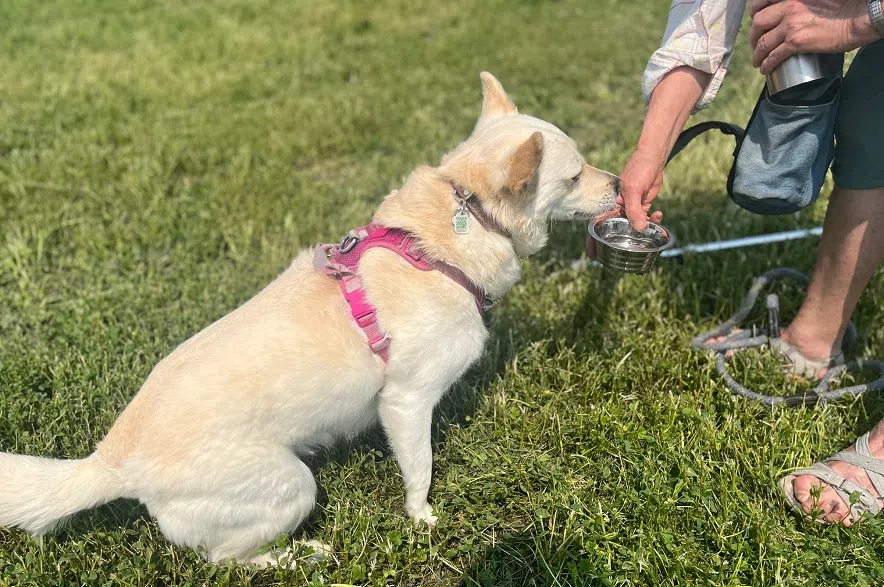When the summer temperatures start to rise, dog parks are full of playful pups enjoying the sunshine along with their owners.
But the Saskatchewan SPCA says it’s important to consider the temperature outside to ensure pets stay safe and healthy. With a heat wave currently bringing temperatures above 30 C to many parts of the province, the potential risks to animals will increase.
Josh Hourie with the Saskatchewan SPCA advised pet owners to walk their animals during the morning and evening hours, when temperatures are cooler.
Hourie explained that a pet owner can use the “five-second rule” to determine if the temperature outside is too hot for their pet by placing the back of their hand on the pavement.
“If you’re not able to hold your hand on the pavement for five seconds because it’s burning, that means it’s too hot for your pets’ paw pads as well,” he said.
Hourie said owners should be mindful of the signs of heatstroke in animals, which may include rapid panting, red or pale gums, thick and sticky saliva, glazed eyes and dizziness
In some extreme cases, Hourie said pets could also experience vomiting, diarrhea or collapsing. If that happens, he said the owner should seek medical care immediately.
In extreme heat or smoky conditions, Hourie said the best place for pets to be is indoors. If a situation feels uncomfortable for an owner, he said it’s likely uncomfortable for pets as well.
“It’s not worth the risk,” he said.
Hourie also advised owners to never leave pets in their cars, even if it’s a quick stop in the store with the car running.
“We would hate to see a situation where a car stalls out, the air conditioning is no longer running and your animal is essentially trapped in an oven,” he said.
Don Ferguson, chief animal protection officer and executive director for Animal Protection Services of Saskatchewan, echoed that statement.
Ferguson said the most common heat-related calls the organization receives are about dogs left inside vehicles. He said even with the windows rolled down, a parked car can be unsafe for pets.
Last July, Ferguson said the organization responded to at least one call a day about dogs left in hot cars. He said police also respond to those incidents.
“It’s likely more than one a day, when you look at both the enforcement agencies involved,” he said.
Ferguson explained that when the organization receives such a call, responders make a reasonable attempt to locate the owner at places like businesses close to where the vehicle is parked. But if the owner cannot be located, the animal may be removed from the vehicle and given medical attention.
He said Animal Protection Services of Saskatchewan also works with SGI to send out warning letters to registered owners who have reportedly left a pet in a hot vehicle.
Ferguson said the organization also regularly receives calls concerning shelter, and stressed the importance of animals having access to water and shade to escape extreme heat.











